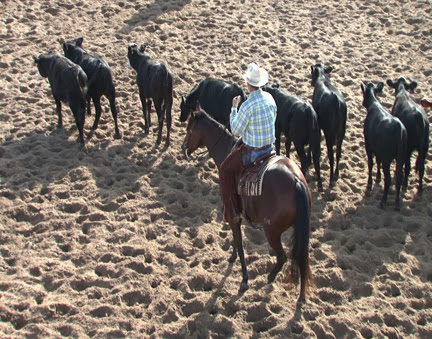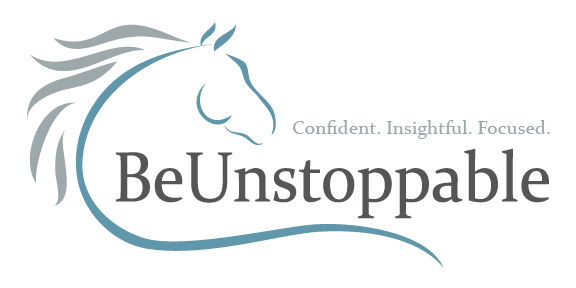There are three main things going on as you’re walking through the herd to make a cut. The first is effective communication with your horse. The second is reading an ever-changing situation. The third is making good decisions moment-to-moment.

That’s a lot to manage all at one time!
This article is about how to use your feet to communicate with your horse on the cut (as opposed to the natural tendency to go to your hand almost exclusively.) The truth is, good communication with your horse on the cut is about seamlessly integrating your hand with your and feet.
Here are 5 guidelines to help you coordinate your hand and your feet on the cut.
1. Keep your eyes focused on where you’re going.
When we’re not sure exactly what to do next, it’s easy to get flustered, look down and start moving our hand erratically.
No matter what, keep your eyes up with a wide vision. Then as you develop the feel of moving your horse with your feet, you will guide him more accurately because your eyes are always focused on where you want to go.
I’m not sure why this is such a powerful concept, but it is. Controlling your eyes is instrumental in using your feet and hand appropriately.
2. Know that when you have light contact with the horse’s mouth, he will respond.
You want to know that at any moment your horse will “listen” to you when you pick him up to direct him or guide him. Ideally, when you pick your hand up, he is light, pauses and waits for you to give him his next direction with your feet.
3. Point your hand.
Point your hand on the mid-line of his neck in the direction you want to go. Additional communications as in lateral movement, forward movement, and acceleration come from your feet.
4. Add your feet purposefully after you point your hand.
-
To add speed to continue on in the same direction, use both feet simultaneously.
-
To shape a horse’s body part, use one foot. For example, a light foot pressed against a horse’s rib cage will typically cause him to turn his nose in that direction.
-
To hold a horse steady, apply consistent pressure with one foot to keep a horse from “wiggling” back and forth. For example, if he wants to move his hind quarters to the right, just move your right foot back and towards his hindquarters and hold it there until he stops moving. Then release your foot.
-
Both feet may be used in sequence or simultaneously for different functions like shaping a horse’s body in the direction of the turn prior to a pivot, but then use the opposite foot to move the horse through the turn.

Thank you for your sharing. I am worried that I lack creative ideas. It is your article that makes me full of hope. Thank you. But, I have a question, can you help me?
Thank you for your sharing. I am worried that I lack creative ideas. It is your article that makes me full of hope. Thank you. But, I have a question, can you help me?
Your article helped me a lot, is there any more related content? Thanks!
Thank you for your sharing. I am worried that I lack creative ideas. It is your article that makes me full of hope. Thank you. But, I have a question, can you help me?
Can you be more specific about the content of your article? After reading it, I still have some doubts. Hope you can help me.
I don’t think the title of your article matches the content lol. Just kidding, mainly because I had some doubts after reading the article.
Your article helped me a lot, is there any more related content? Thanks!
I don’t think the title of your article matches the content lol. Just kidding, mainly because I had some doubts after reading the article.
Will review often !
Awesome information! Thanks
Perfect for this week for ME right on my training target.